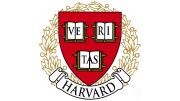The University today released its tax return for nonprofit organizations (Form 990) for 2014 (covering the tax year from July 1, 2014, to June 30, 2015—Harvard’s fiscal year 2015). As is its practice, Harvard has simultaneously disseminated information on the compensation paid to the president and chief executive officer of Harvard Management Company (HMC, which is responsible for investing the endowment) and to its highest-paid portfolio managers. The tax filing discloses compensation for other University officials as well, including President Drew Faust. (As noted in May 2010, the basis for such reporting has changed, so the HMC information just released covers payments made during calendar year 2014—and is doubly historical in nature this year, given the change in HMC’s leadership and senior investment-manager ranks, as reported.)
Thus, the newly released HMC compensation figures, reflecting annual incentive pay disbursed once each year, span the second half of fiscal 2014 (a robust year when the rate of investment return was 15.4 percent, and the endowment increased in value by $3.7 billion, to its reported value of $36.4 billion as of June 30, 2014, after taking into account both distributions to support Harvard operations and new endowment gifts received) and the first half of fiscal 2015 (a year of uncertain markets and internal transitions, when the rate of investment return was a relatively disappointing 5.8 percent, and the endowment increased in value by $1.2 billion, to its reported value of $37.6 billion as of June 30, 2015). The articles linked in this paragraph provide investment returns by asset class for those reporting periods.
For calendar 2014, HMC reported these total-compensation sums for Jane Mendillo, who stepped down as president and CEO at the end of 2014, and the five most highly compensated portfolio managers and other personnel. For those individuals who were also among the most highly compensated HMC personnel in calendar year 2013 (reported last May), that year’s compensation is also shown (in parentheses). Note that Stephen Blyth succeeded Mendillo as president and CEO effective January 1, 2015; Andrew Wiltshire has subsequently retired; and Daniel Cummings is now head of real estate.
- Jane L. Mendillo, president and CEO: $13.8 million, representing compensation for 18 months, covering all of fiscal year 2014 and the first half of fiscal 2015—from July 1, 2013, to December 31, 2014, when her HMC service concluded ($9.6 million, one-year compensation)
- Stephen Blyth, head of public markets: $8.3 million ($11.5 million)
- Andrew G. Wiltshire, head of alternative assets: $10.4 million ($8.5 million)
- Daniel Cummings, real-estate portfolio manager: $8.7 million ($5.4 million)
- Elise McDonald, absolute-return portfolio manager, $4.5 million
- Robert Ettl, chief operating officer, $4.4 million
HMC’s formula has historically provided a base salary, with the large majority of bonus compensation varying with investment-managers’ performance. Those variable awards depend on producing investment returns in excess of market benchmarks for the specific category of assets, and sustaining that performance over time: subsequent underperformance results in variable compensation being “clawed back.” Thus, the variable awards in any annual period reflect results over multiple years.
This year’s announcement notes that, as Blyth has signaled, “HMC is currently undertaking a review of its compensation system. While a significant portion of compensation will remain linked to long-term outperformance versus industry benchmarks, it will also take into consideration the achievement of shared goals that closely align portfolio managers with the overall success of HMC”—in other words, the endowment’s aggregate rate of return.
Individual managers’ compensation has sometimes provoked criticism. It is worth noting that for HMC portfolio managers, who invest perhaps 40 percent of endowment assets, the reported compensation includes performance incentives; reported management costs for funds invested externally (the remaining HMC assets, and the model for essentially all assets at peer institutions like Princeton, Stanford, and Yale) reflect only direct fees, not performance incentives like the much-noted 20 percent profit-sharing that is commonly awarded to external partners running private-equity and hedge funds.
The chief challenge facing HMC now is to improve investment performance; because investment returns are reported after management expenses, the lower expense ratio HMC claims has the effect of increasing investment returns—but they have trailed the performance of endowments at some important peer institutions with which the University competes to attract faculty members and students. Recent financial and endowment disclosures to Congress reveal that the differing management approaches can incur very different costs: Princeton's entire internal, 42-person PRINCO investment team, for example, cost $21 million for endowment-related work in fiscal 2015; external management fees (which exclude performance-based incentives and costs) were $299 million. (Details on costs at other institutions will be reported in the July-August Harvard Magazine.)
Presidential, Administrative, and Decanal Pay
President Drew Faust’s salary for the fiscal year reported in the tax filing was $816,370, plus other compensation of $386,610—retirement and other deferred compensation, and the value of the use of the official presidential residence, Elmwood. (Separately, her annual compensation for service on the board of directors of Staples, Inc., reported in its proxy statement, has remained the standard cash fee for each board member of $75,000, plus stock awards of $175,000.)
Provost Alan Garber’s salary was $646,437. Other reported salaries, for the executive vice president and various vice presidents, ranged from $630,414 to $274,952. The highest decanal salary reported was that of Harvard Medical School’s Jeffrey S. Flier, at $601,688.
Other Disclosures
The tax filing also discloses Harvard charitable contributions, among them many in its Greater Boston home communities. Also listed are such interesting beneficiaries as the Retirement Sanctuary for Laboratory Animals, in Texas—the softer side of a biomedical research institution.









